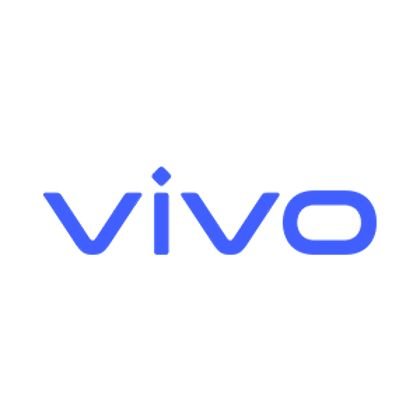
Blockchain technology has revolutionized how we think about digital transactions, data security, and decentralized systems. As blockchain adoption continues to expand, the need for secure and robust blockchain applications has become paramount. To help developers create secure blockchain solutions, several frameworks have emerged, each offering unique tools, libraries, and features to simplify development while ensuring high-security standards. This article explores the must-know frameworks for developing secure blockchain applications, highlighting their key features, use cases, and benefits.
1. Hyperledger Fabric
Overview:
Hyperledger Fabric is an open-source blockchain framework hosted by the Linux Foundation and designed for enterprise-grade blockchain applications. It provides a modular architecture that allows developers to customize components such as consensus, privacy, and membership services.
Key Features:
- Permissioned Blockchain: Offers a permissioned network model, ensuring that only authorized participants can join the network, which enhances security.
- Modular Architecture: Enables customization of various components, such as consensus protocols, membership services, and data privacy options.
- Smart Contracts (Chaincode): Supports smart contracts written in Go, Java, or JavaScript, allowing developers to define business logic securely.
- Private Data Collections: Allows certain data to be shared only among a subset of participants, enhancing data privacy and confidentiality.
Use Cases:
- Supply chain management, healthcare data management, financial services, and government applications requiring a high level of security and privacy.
Benefits:
- Robust security features tailored for enterprise needs.
- Flexible architecture allows for customization to meet specific business requirements.
- Active community and support from the Hyperledger Consortium.
2. Ethereum and Solidity
Overview:
Ethereum is a decentralized platform that enables developers to build and deploy smart contracts and decentralized applications (dApps). Solidity is the primary programming language used to write smart contracts on the Ethereum blockchain.
Key Features:
- Decentralized and Public: Operates on a public blockchain, providing transparency and trust among participants.
- Turing-Complete Smart Contracts: Solidity supports Turing-complete smart contracts, enabling complex business logic to be implemented securely.
- Large Developer Community: One of the largest developer communities in the blockchain space, offering extensive resources, libraries, and tools.
- Security Audits: Tools like MythX, ConsenSys Diligence, and OpenZeppelin offer auditing and testing services to ensure smart contract security.
Use Cases:
- DeFi (Decentralized Finance), digital identity verification, supply chain management, and gaming applications.
Benefits:
- Mature ecosystem with extensive documentation, tutorials, and community support.
- Compatibility with various tools and libraries for security audits and smart contract development.
- Strong focus on security and best practices, with many resources available for secure development.
3. Corda
Overview:
Corda is an open-source blockchain platform designed for businesses to build interoperable blockchain networks that transact in strict privacy. Developed by R3, Corda offers a unique approach to blockchain by focusing on private and permissioned networks.
Key Features:
- Permissioned Network: Operates as a permissioned blockchain, allowing only authorized participants to join, thereby enhancing security.
- Data Privacy: Utilizes point-to-point communication between nodes, ensuring data privacy and confidentiality.
- Smart Contracts in Kotlin or Java: Supports smart contracts written in JVM-based languages, providing flexibility for developers.
- Interoperability: Designed to interoperate with existing business systems, allowing seamless integration with legacy infrastructure.
Use Cases:
- Financial services, trade finance, digital identity, healthcare, and energy sectors.
Benefits:
- High level of privacy and confidentiality, suitable for industries with strict regulatory requirements.
- Supports interoperability with existing business systems, reducing the cost and complexity of adoption.
- Strong focus on security and compliance, with built-in tools for auditing and verification.
4. Quorum
Overview:
Quorum is an enterprise-focused version of Ethereum, developed by JPMorgan Chase. It is designed to provide a secure, permissioned blockchain platform for financial institutions and businesses.
Key Features:
- Permissioned Blockchain: Offers a permissioned environment, ensuring secure access and control over who can participate in the network.
- Private Transactions: Supports private transactions, ensuring that sensitive data is only visible to the parties involved.
- Enhanced Privacy Features: Implements advanced privacy mechanisms such as zero-knowledge proofs (ZKP) to secure data.
- Ethereum Compatibility: Fully compatible with the Ethereum ecosystem, enabling the use of Ethereum tools, libraries, and smart contract languages like Solidity.
Use Cases:
- Banking and finance, asset management, healthcare, and supply chain management.
Benefits:
- Combines the flexibility of Ethereum with enhanced privacy and security features tailored for enterprise use.
- Supports advanced cryptographic techniques, such as ZKP, to enhance data confidentiality.
- Backed by a strong consortium and integrated with existing Ethereum tools and libraries.
5. OpenZeppelin
Overview:
OpenZeppelin is an open-source framework that provides a library of secure and tested smart contract templates for Ethereum and other EVM-compatible blockchains. It is widely used by developers to build secure blockchain applications.
Key Features:
- Pre-Audited Smart Contracts: Offers a comprehensive library of pre-audited smart contracts, reducing the risk of security vulnerabilities.
- Standardized Tokens: Provides implementations of popular token standards, such as ERC-20, ERC-721, and ERC-1155.
- Security Tools: Includes tools like OpenZeppelin Defender for automating security operations and monitoring contracts.
- Continuous Audits and Updates: Regularly audited by security experts and updated to reflect the latest security practices and standards.
Use Cases:
- DeFi applications, NFT marketplaces, token issuance platforms, and other Ethereum-based dApps.
Benefits:
- Reduces the risk of security vulnerabilities by using battle-tested and community-audited smart contracts.
- Provides comprehensive documentation and a supportive developer community.
- Offers a range of tools for continuous security monitoring and management.
6. Substrate
Overview:
Substrate is a blockchain development framework created by Parity Technologies, the team behind Polkadot. It enables developers to build custom blockchains optimized for specific use cases while leveraging Polkadot’s security features.
Key Features:
- Modular and Extensible: Provides a modular architecture, allowing developers to customize every aspect of their blockchain, from consensus mechanisms to data structures.
- Interoperability with Polkadot: Built to be interoperable with the Polkadot network, enabling cross-chain communication and shared security.
- Rust Programming Language: Utilizes Rust, a secure and high-performance language, to develop blockchain logic and smart contracts.
- On-Chain Upgrades: Supports forkless upgrades, allowing for seamless updates and improvements without hard forks.
Use Cases:
- Custom blockchains, interoperable networks, decentralized finance (DeFi), and cross-chain applications.
Benefits:
- Flexibility to build blockchains tailored to specific security and performance requirements.
- Strong focus on interoperability and cross-chain communication.
- Leverages the Polkadot network’s shared security for enhanced resilience.
7. Tezos
Overview:
Tezos is a self-amending blockchain platform designed to facilitate secure smart contract development and deployment. It provides a secure environment for creating decentralized applications (dApps) with a focus on formal verification.
Key Features:
- Self-Amending Protocol: Allows the blockchain to upgrade itself through on-chain governance, reducing the risk of hard forks and ensuring long-term stability.
- Formal Verification: Supports formal verification, a method of mathematically proving the correctness of smart contracts, minimizing the risk of bugs and vulnerabilities.
- Michelson Smart Contract Language: Uses Michelson, a stack-based programming language designed for secure smart contract development.
- Decentralized Governance: Employs on-chain governance to allow stakeholders to propose and vote on upgrades, ensuring continuous improvement and security.
Use Cases:
- Financial applications, tokenized assets, gaming, and secure decentralized applications.
Benefits:
- Strong emphasis on security through formal verification and on-chain governance.
- Self-amending protocol ensures adaptability and resilience over time.
- Active development community with a focus on secure and efficient smart contract development.
8. Chainlink
Overview:
Chainlink is a decentralized oracle network that enables smart contracts to securely interact with off-chain data sources, APIs, and other external resources. It is a crucial component for building secure blockchain applications that require reliable external data.
Key Features:
- Decentralized Oracles: Provides a network of decentralized oracles to securely connect smart contracts with real-world data.
- Data Security and Reliability: Uses multiple data sources and cryptographic proofs to ensure data integrity and reliability.
- Cross-Chain Compatibility: Compatible with various blockchains, including Ethereum, Binance Smart Chain, and Polkadot, among others.
- Verifiable Random Function (VRF): Offers a secure random number generator for blockchain applications that require randomness, such as gaming and lotteries.
Use Cases:
- DeFi applications, prediction markets, gaming, supply chain management, and insurance.
Benefits:
- Ensures the security and integrity of external data used by smart contracts.
- Compatible with multiple blockchains, enabling cross-chain functionality.
- Provides cryptographic proof of data integrity, enhancing trust in blockchain applications.
Conclusion
Developing secure blockchain applications requires a deep understanding of the unique challenges and risks associated with decentralized technologies. The frameworks listed above provide powerful tools, libraries, and resources to help developers build secure, robust, and scalable blockchain applications. Whether you are developing a private, permissioned blockchain for an enterprise or a public, decentralized application, these frameworks offer the necessary capabilities to ensure your solution meets the highest security standards.
By leveraging the right framework, developers can focus on building innovative applications while ensuring that security, privacy, and compliance are at the forefront of their blockchain development efforts.








